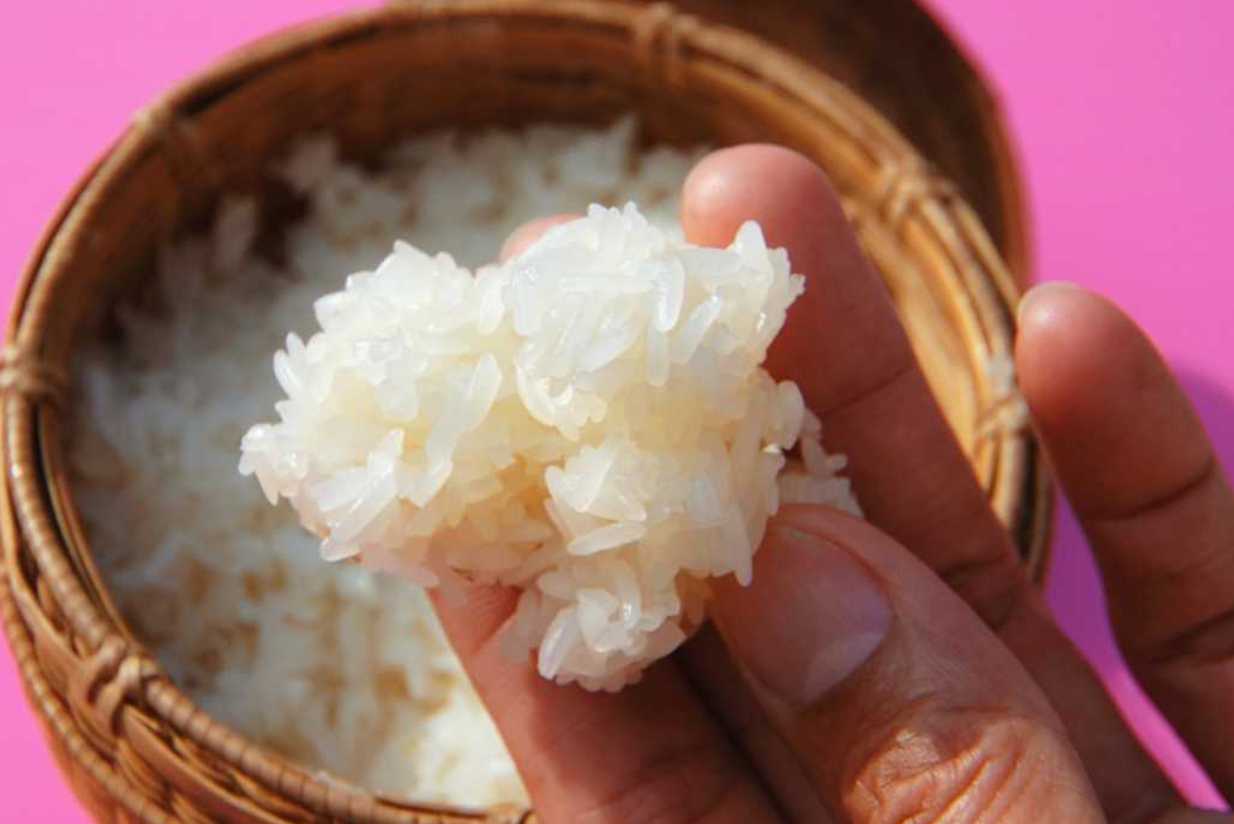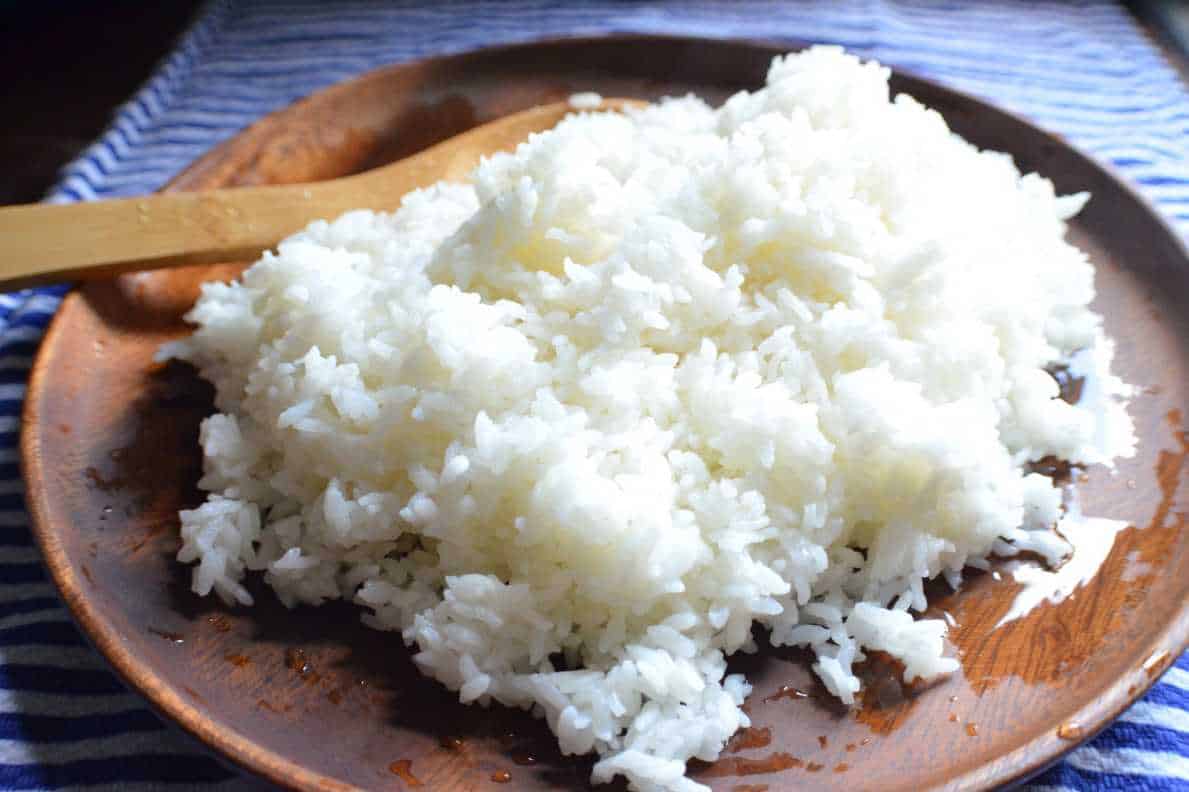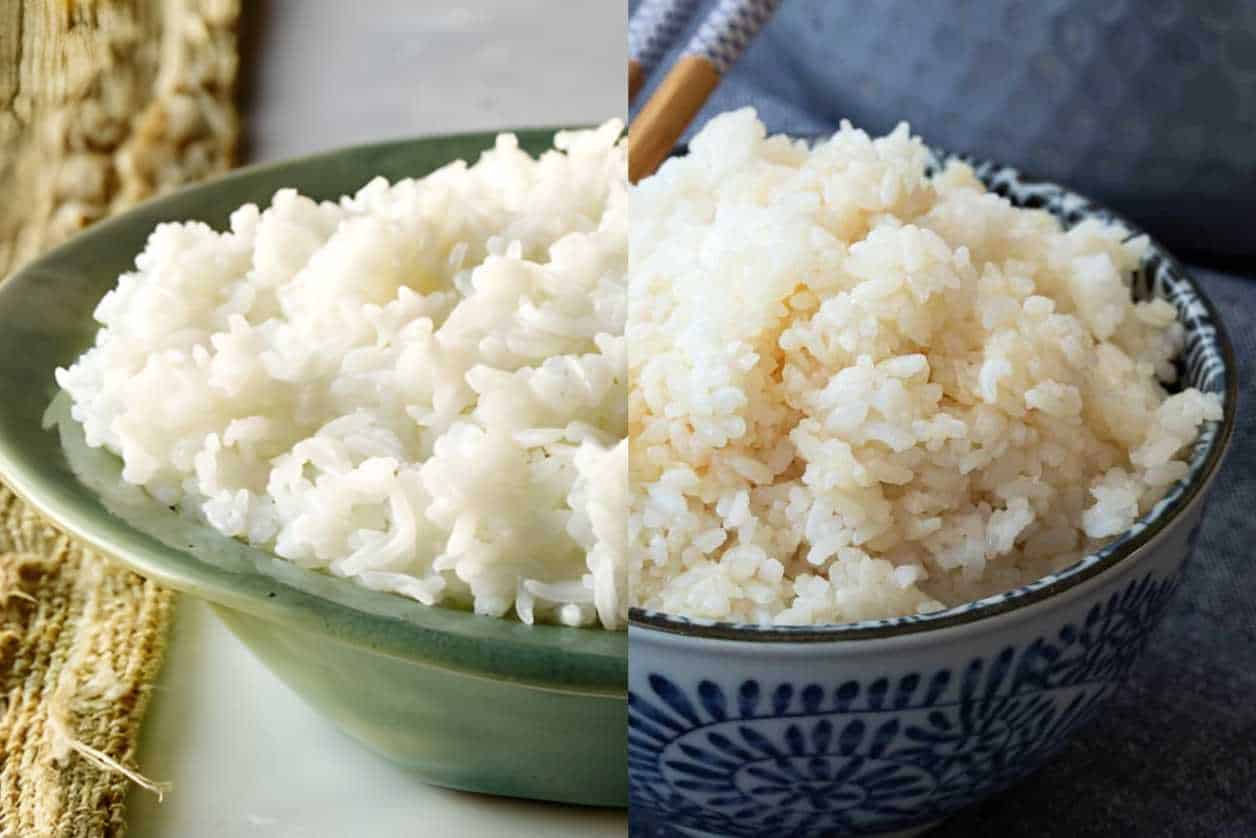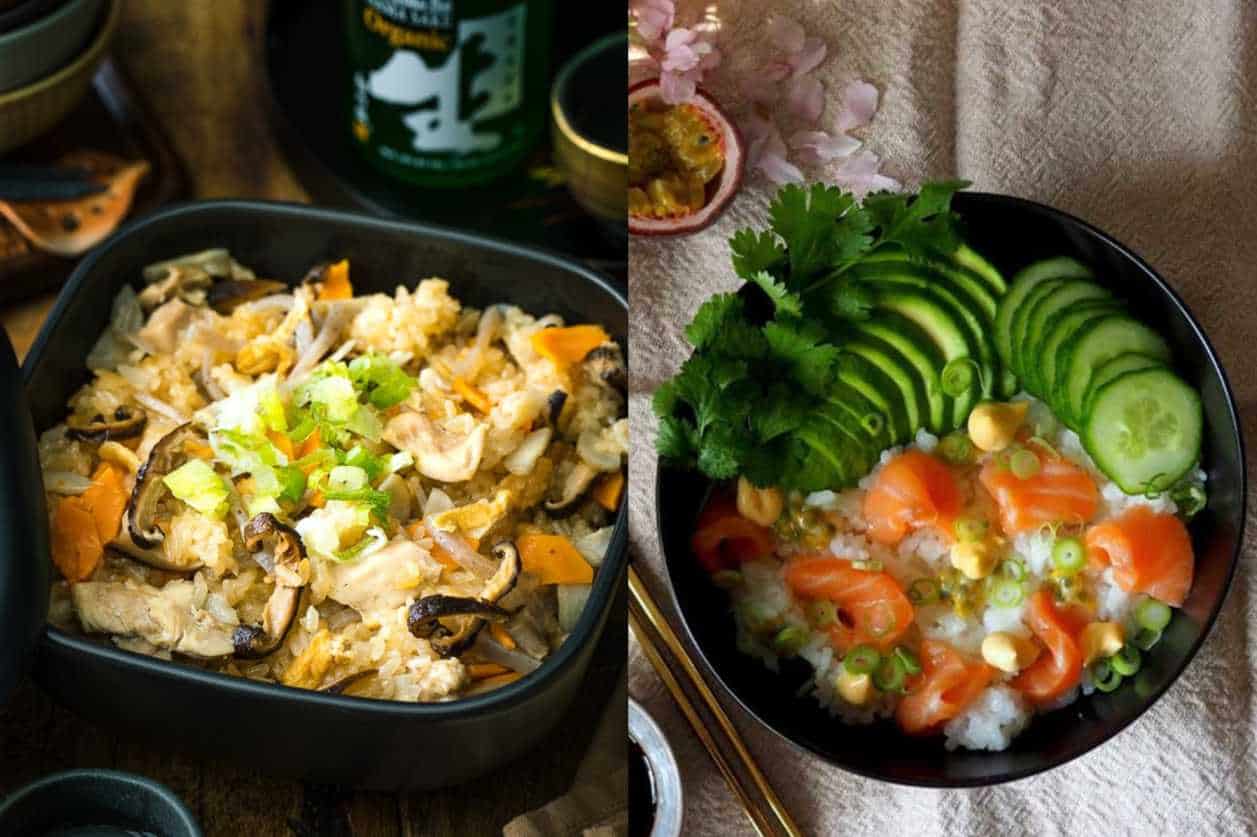Those who do not dig deep into the colorful world of ingredients might have a hard time distinguishing sticky rice from sushi rice.
However, it’s really no problem as there are many materials available for learning. Here are some of the basic things you need to know about sticky rice vs. sushi rice.
Getting to Know Sticky Rice
Sticky rice is also called glutinous rice or sweet rice, and scientifically, it’s named Oryza sativa glutinosa. This type of rice is popular and widely used in Asia. Sticky rice is featured in several Asian cuisines as it’s considered essential for many dessert dishes.
While it’s still under the family of rice, the process of cooking this is different from other types. This type of rice is high in amylopectin starch, dextrin, and maltose. On the other hand, sticky rice is low in amylose starch.
There are various types of glutinous rice too. The types depend on the grain size and shape and the grain color; these range from long-grained to short-grained, then white to violet.
As the name of this rice suggests, this type of rice, when cooked, sticks together into a single bunch. Sticky rice is most often steamed and used in sweet dishes and savory ones. As for the price, glutinous rice is naturally more expensive when compared to other regular white rice types.
The price range can be up to twice the price of regular white rice. To be considered sticky rice, it should have high amylopectin content, and the rice should also be low in amylose. Here are some common types of glutinous rice.
- Japanese sweet rice – This sticky rice is commonly used to make Japanese desserts. The grains of this variety are short and opaque. As the name suggests, this type of rice is sweet, and in addition, it’s also very sticky, making it perfect for a variety of dessert dishes.
- Black and purple – Black and purple sticky rice is a whole-grain type of rice farmed in Southeast Asia. When uncooked, the outer layer of the bran of the grain is dark purple or black. On the other hand, the external layer functions like a dye, coloring the white endosperm and creating purple grains.
- Thai sticky rice – This sticky rice has longer-shaped grains and a floral scent. These varieties are cultivated in Laos and Northern Thailand.
Introducing Sushi Rice
Sushi rice might be more familiar to someone who enjoys sushi. This is because the sushi you eat in restaurants uses sushi rice. In general, sushi rice is Japanese rice that’s short-grained and mixed with different ingredients.
The common ingredients mixed with sushi rice are rice vinegar, salt, sugar, and, depending on preference, sake. The word sushi is anchored in this particular type of vinegared rice. It’s also called ‘sumeshi’ in Japan, directly translating to ‘vinegared rice.’
Many people mistake sushi rice to be regular Japanese rice because of their similar physical appearance or the wrong usage of people around them.
You have to note the one thing in differentiating sushi rice from regular Japanese rice: Sushi rice is cooked with a mixture of vinegar and several other ingredients that add flavor. On the other hand, regular Japanese rice is what people cook daily without any vinegar mixture.
Regular Japanese rice is usually partnered with savory dishes like Japanese curry, fried egg, and other dishes fitting the role of being a plain rice companion.
Sushi rice is made from Japanese short-grain rice or Japonica. Japonica was the perfect and ideal type of rice to make sushi rice with. When cooked, it’s short and becomes sticky (just enough, and just the right way).
These two characteristics make up the ideal sushi rice standard. While authentic sushi rice should be Japonica, it can be relatively pricey, so some restaurants abroad use other types of rice.
However, if you are quite a sushi enthusiast, you would know whether the rice used for your sushi is Japonica or not, just like the majority of Japanese do. Here are two varieties of Japonica rice.
- Uruchimai – This rice is the standard version used in plain rice, usually partnered with different savory dishes. Uruchimai is the type of Japonica rice used daily in dishes, including sushi, rice balls, and other Japanese dishes.
- Mochigome – This type is also known as short-grain sweet rice. It is also termed glutinous rice. Mochigome is commonly used in making mochi rice cakes and other traditional Japanese desserts.
Sticky Rice and Sushi Rice Similarities
There are several factors why these two types of rice are usually interchanged or mislabeled. Here are their similarities and differences so you can be more informed about sticky rice and sushi rice and the nuances.
Sticky
First and foremost, one of the most notable similarities is these rice types’ texture when cooked. Both sticky rice and sushi rice are sticky as they are meant to be that way to fulfill their roles in different kinds of cuisines.
Their stickiness is due to the starch level found in these rice types. Sushi rice and sticky rice has high levels of starch in them. Basically, sushi rice is naturally sticky because Japonica, or Japanese short-grained rice, has high starch levels.
It can be used in sushi.
Another thing about these two types of rice is that they can both be used in making sushi. Since sticky rice can be categorized into short, medium, and long grains, you can use the short-grain variety to make sushi, which sometimes makes it confusing.
Sweet
Another similarity between sticky rice and sushi rice is that they are both on the sweet spectrum of rice varieties.
Sticky Rice vs. Sushi Rice: Differences
Appearance
Despite their similarities in texture and composition, you can easily differentiate sticky rice from sushi rice from how they look. Sticky rice is opaque, and it has a chalk-like color. On the other hand, sushi rice has a clearer appearance and is more opaque.
Dish uses
Apart from their appearance, these two types of rice are used in two different spectrums of dishes. Sticky rice is usually used to make desserts, while sushi rice makes savory sushi.
While they can sometimes be used interchangeably, it’s important to note that sticky rice is a type of rice, while sushi rice is the way Japanese rice is prepared. This is because it’s not sushi rice if it isn’t vinegared and seasoned with necessary flavorings. Sticky rice is just more typically used in desserts rather than sushi.
Grain type
As discussed above, sticky rice has different types of grain sizes. Sticky rice can have short, medium, and long grains. On the other hand, sushi rice should only be made of short-grained rice, which removes both the medium and long grain variety of sticky rice among the options.
Japonica is a term for Japanese short-grained rice, which means Japonica only has a single type of grain size, short-grain, while sticky rice has three, of which two are not usable for sushi.
Amylose content
While sticky rice and sushi rice both have high levels of amylose, sushi rice has relatively more amylose content than sticky rice. This simply means that aside from being sticky, sushi rice is also very soft even when cooled down.
Taste
Sticky rice and sushi rice are sweet rice varieties, but well-balanced and flavored sushi rice has a balanced sour, sweet, and salty hint. On the other hand, sticky rice does not have the same flavoring. It is cooked chiefly plainly or with sugar making it sweeter if not plain.
Nutrition
While they are both rice and have quite similarities in terms of nutritional content, sticky rice is considered to be a healthier rice variety compared to sushi rice.
This is because sushi is not a bowl of plain rice, it has undergone processes, and it has added ingredients for flavor, mainly vinegar, salt, and sugar. And so, sushi rice has quite a higher level of sugar and salt.
Sticky Rice and Sushi Rice Dishes
Sticky rice and sushi rice differs in several ways, including the dishes made using them. Because sushi rice is flavored and has undergone a process like flavoring or fermenting, it’s used in savory dishes.
Using sushi rice in dessert can be possible but might be unpalatable for many people. On the other hand, you can make sushi rice using sticky rice. The only important note you need to remember is to use the short-grain variety of sticky rice. Here are some of the dishes you can make using sticky rice and sushi rice.
| Sticky Rice | Sushi Rice |
| Sushi | Nigiri |
| Steamed lotus leaf wraps | Maki |
| Mango sticky rice | California roll |
| Pearl meatballs | Spider roll |
| Stuffed lotus root | Dragon roll |
| Dumplings | Uramaki |
| Peanut sticky rice | Temaki |
| Stuffing for ducks | Spicy salmon roll |
| Other variety of sweets | Philadelpia roll |
Summary
Before expanding your knowledge in cooking, it’s essential to start learning the ingredients first. To cook a good dessert or good sushi, you must know sticky rice vs. sushi rice basics. This way, you know exactly what type and variety of rice best fit the recipe you may want to try.

Hiroshi Nakamura, a Tokyo-born sushi chef turned US-based writer and critic, is the voice behind ichisushi.com, blending traditional sushi wisdom with modern insights.






